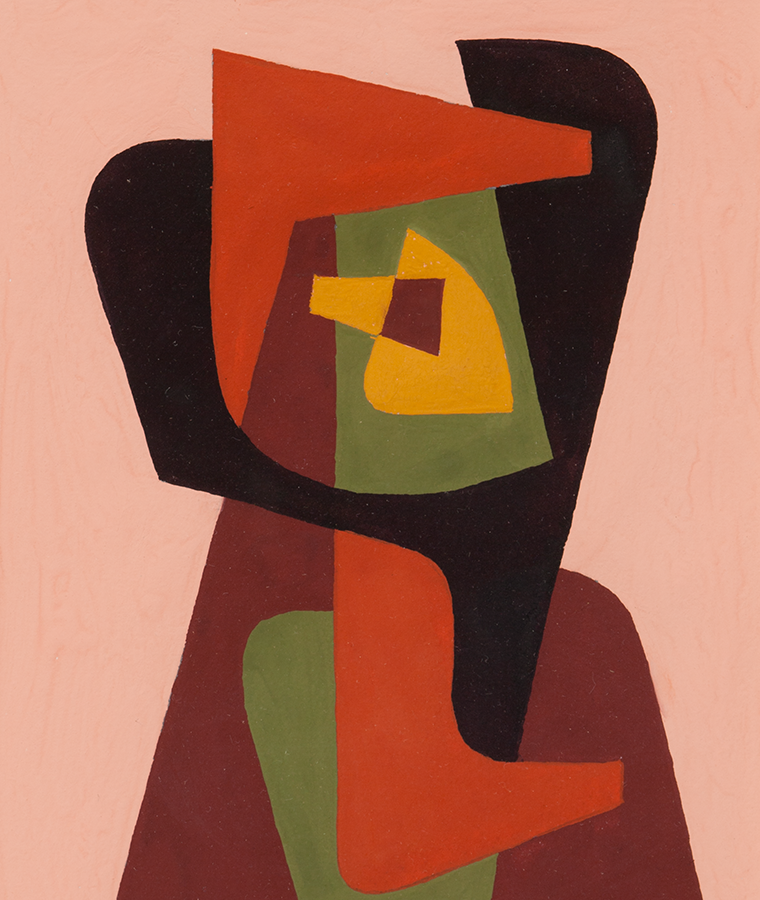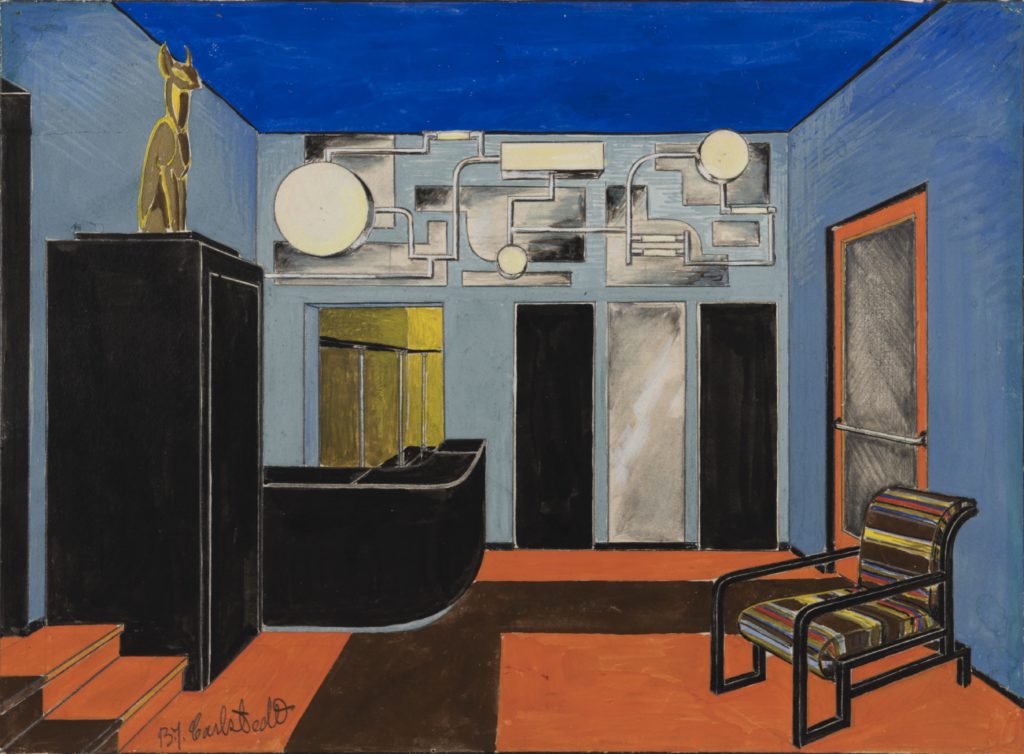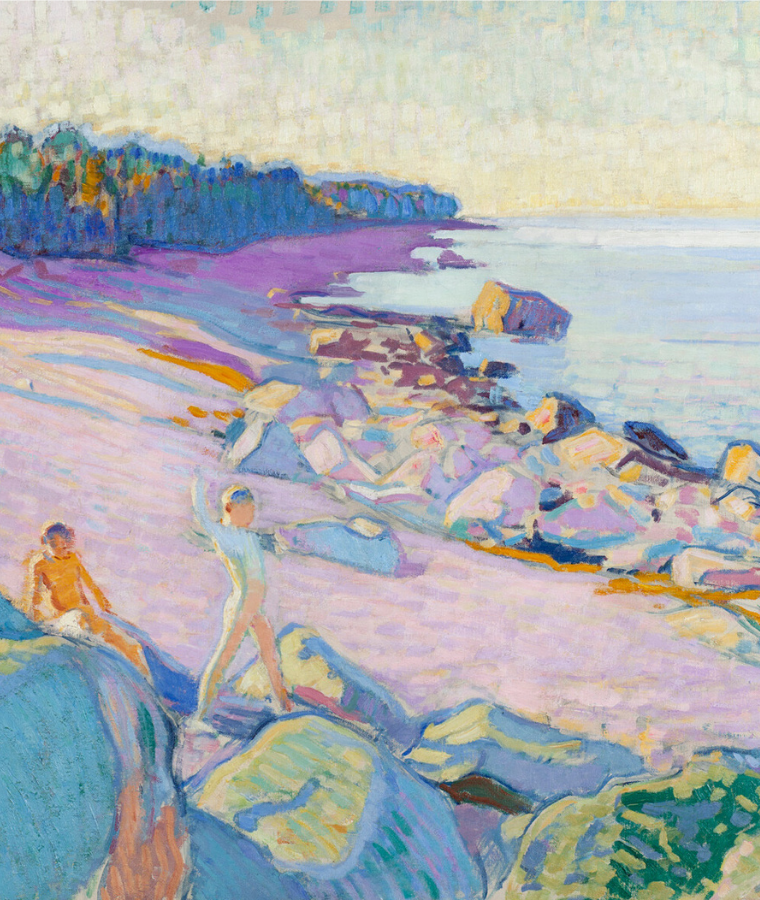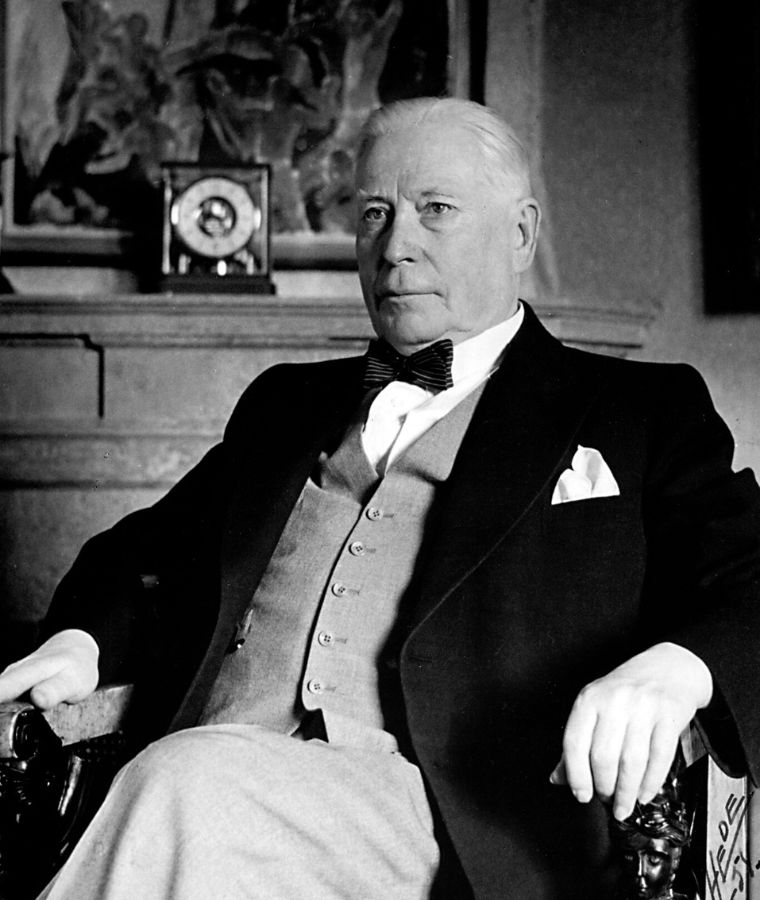Birger Carlstedt (1907–1975) holds a prime position in the Föreningen Konstsamfundet collection. Perhaps you visited Carlstedt’s “Golden Cat” exhibition at Amos Rex in the winter of 2019–20? Carlstedt’s bequest includes several hundred paintings, countless drawings and sketches from all stages of the artist’s development, as well as other materials and objects related to his career.
Carlstedt was a pioneer of Finnish modernism and abstract art, a multi-talented dandy who explored the world and worked in painting, interior design, industrial and set design, as well as monumental painting.
In his youth, Carlstedt was one of the few experimental artists in the conservative culture of Finland’s interwar period. He travelled extensively and took part in the artistic debates of his day. In the early 1950s, after many phases of stylistic development, he settled on a completely non-representational geometric abstract expression, which he resolutely developed until the end of his career in the 1970s. Carlstedt was an exceptionally multi-faceted artist. In addition to paintings, he designed textiles and furniture as well as elegant and modern interiors for Le Chat Doré in Helsinki.
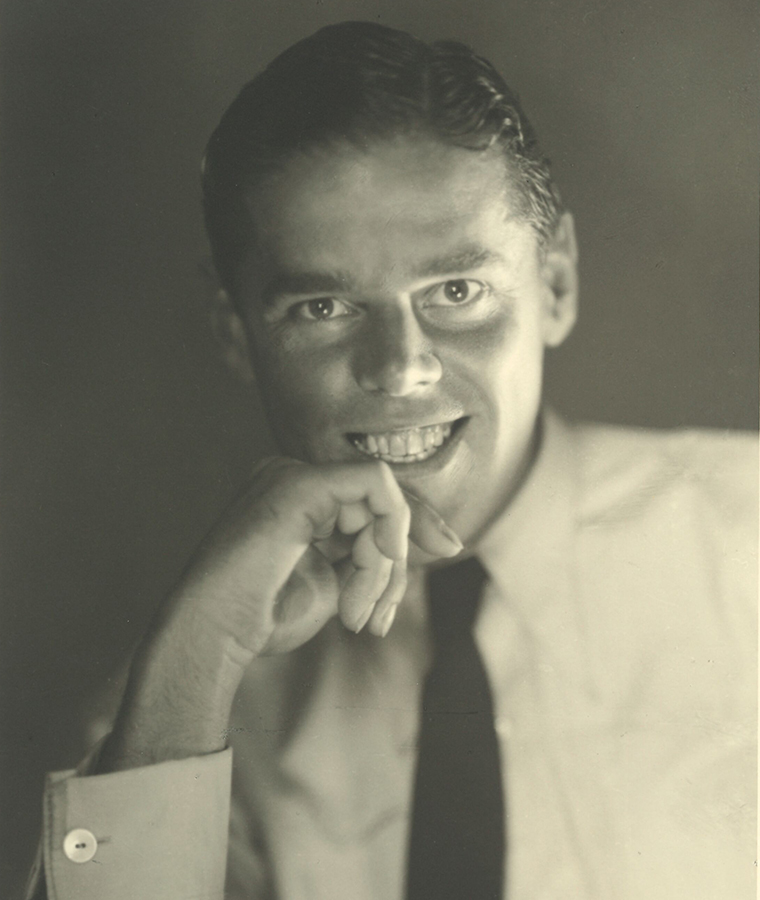
Birger Carlstedt
Birger Carlstedt was born in Helsinki on July 12, 1907. His parents – Johan Wilhelm Carlstedt, who was born in Karlskrona, Sweden, and Amanda Josefina Lindström, who was born in Siuntio – ran a restaurant in Helsinki. The Carlstedts lived for a long time in the Balder House, close to Senate Square. As the son of a wealthy family Birger had a privileged childhood, and thanks to his language skills he had opportunities to be influenced by European art very early on. Johan died in 1913, and Amanda continued to own and manage several restaurants in Helsinki up until 1938.
Carlstedt’s artistic career began after his studies at the end of the 1920s, when he produced his earliest paintings. At that time, Birger also had his own interior-design company, working on projects like Le Chat Doré that combined visual art and interior design, and in which his first wife Ingegärd Jacquette af Forselles (1906–1933) was probably an important partner in collaboration. Following Jacquette’s early death, Birger did not remarry until 1941, to Inga Hjördis Beatrice Roos (1913–1970), and the couple lived in the studio building that he designed in Matinkylä, Espoo. After the marriage ended in divorce in 1949, Carlstedt married the concert pianist France Ellegaard. She was of Danish descent but was born and grew up in Paris. The couple lived together in the Matinkylä studio house until Birger Carlstedt’s death in 1975.

